It is customary to call human parasites all the organisms that live at your expense. They are bacteria, fungi, worms. Human parasites are divided into internal and external. The most unpleasant and most destructive to the body are helminths - a variety of parasitic worms.
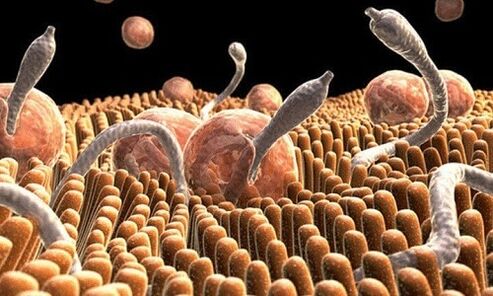
Parasites and the human body
The creatures that parasitize the human body can be external or internal. External includes:
- Mosquitoes.
- Leeches.
- Lice.
- Microorganisms that cause scabies.
But there are many more creatures that prefer to settle inside the body. These include:
- Bacteria.
- The simplest.
- Helminths.
- Fungal.
The external and internal organization of the parasite is one of the simplest. Due to the fact that they do not need to evolve to survive, their organization is greatly simplified.
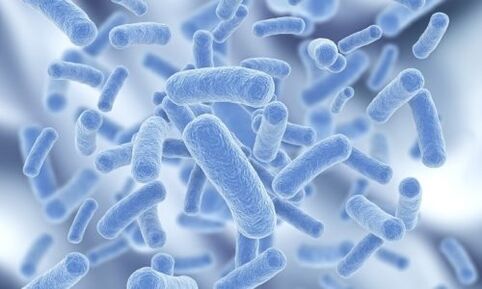
There are many creatures that prefer to settle within the body. For example, they may be bacteria.
They cannot survive without a host organism, as they are unable to obtain their own food. But they all multiply, almost without exception, very quickly, especially under suitable conditions. Where they are not led immediately.
They differ geographically. Some can be found everywhere, no climate is an obstacle for them. Others live exclusively in tropical countries, but in the human body they can be easily transported to any other. In the body, they also settle in different places.
The luminous parasites are satisfied with the hollow parts of the body, and the tissues live in the tissues.
The development cycles of parasites, mainly helminths, are also varied. Some first develop in the soil (biohelminths) and then transform into a living creature. Others must first develop in the body of any other living creature, but not in a person. Others as an adult may be transferred to another or reinfect themselves.
It is a mistake to assume that the infection can occur exclusively through dirty hands. The eggs of some helminths are viable outside the nutrient medium for six months and adhere well to the animals' hair. Eggs also survive in a dangerous environment for them - if you cook meat or fish incorrectly, a whole litter of worms can settle inside you.

It is worthwhile to cook the meat incorrectly, as a whole litter of worms can settle inside you.
Human endoparasites
The parasites are divided into endoparasites and ectoparasites. Endoparasites - those who live inside, ecto - outside. Endoparasites are able to establish themselves in almost all internal organs and tissues of the body. They are divided depending on the location. Endoparasites are:
- Endoparasites of internal organs that connect with the external environment.
They are installed precisely in the organs that are connected to the external environment, and not vice versa: the parasitic organism does not choose to "breathe". These organs include the intestines, the lungs and the human urinary reproductive system. They are amoebae, worms and flagellated parasites.
- Blood parasites.
They live in human blood. They can live in plasma, white blood cells, erythrocytes. These are trypanosomes, microfilariae or hemosporides.
- Tissue endoparasites.
Those endoparasites that choose body tissues as their place of residence. Muscle tissue, brain, cartilage, connective tissue. Even in nerve fibers, tissue endoparasitis can be established. These are Finnish worms, trypanosomes, myxosporids, trichinae and others.
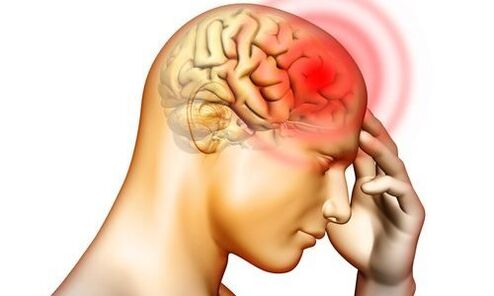
Endoparasites can choose the brain as their place of residence.
The definition of the type of parasite by the location of its location is quite arbitrary. Many species are able to migrate through various internal organs and travel regularly through the host's body. The reproduction process can take place in one place, and the organisms will exist directly and will feed in another. The location where the parasitic creature settles and will be considered the location of its conditional location.
Despite the simplification of many parasite systems, their life cycle is quite complex.
Some species throughout their life have to change several hosts, which may belong to different biological species. Others are able to survive within just one species, but may require intermediate hosts. In one person they multiply and in another they develop and mature. With such a complex life cycle, your sexual functions increase significantly. To survive in the body, parasites need to multiply quickly and a lot.
Helminths
There are three main types of helminths, also called worms. This:
- Nematodes, they are roundworms.
- Cestodes, endoparasites in the form of tape.
- Trematodes, also known as worms.

Geohelminths begin their existence on terrestrial soil.
In addition, they can be divided according to the length of the life cycle and the number of locations they pass through along the way. There are also three types:
Geohelminths
"Geo" is the land. These worms start to exist in the terrestrial soil, only after the stage of maturation can they infect a person. They do not need intermediate hosts: eggs enter the soil along with human feces. Until the larval stage, they develop exclusively in the hot season.
These worms include roundworms, intestinal eels, nekator, whipworms.
Larvae of these parasites can enter the human body through unwashed vegetables or through direct contact with the soil.
Biohelminths
They are parasitic worms whose life stages pass through several hosts. There may be two or more intermediate hosts, depending on the type of worm. Some parasites change only one person. Others, before finally entering the human body, use the organisms of other biological beings for development.

You can be infected by pets or by contact with other people, as well as by eating raw meat. Biohelminths include bovine tapeworms, echinococci, broad tapeworms, trichinella and others.
Infectious worms
These worms do not need soil or intermediate hosts. They go through all the stages of their life cycle in an organism, very comfortably located. Larvae are excreted directly from the human body, when in contact with domestic surfaces and other people, they spread freely.
Helminths can live in different organs and systems of the human body, periodically migrating from one part of the body to another.
The list of diseases caused by helminths is very long. It is possible to determine which parasites live in the body and which treatment can be started only after carrying out all the tests necessary to establish the type of test.
Round worms
The most common in the human environment are roundworms, also known as nematodes. In total, there are more than 24, 000 species of nematodes in the world.
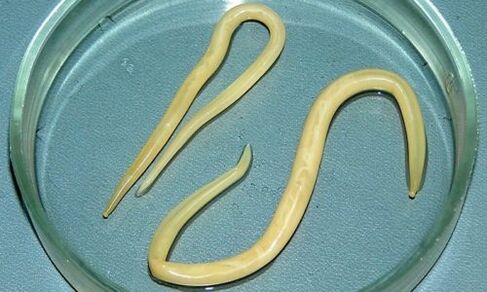
The most common human nematodes are roundworms.
They are called round because of their shape, which is revealed if you make a cross-section. The most common human nematodes:
- Ascaris.
- Earthworms.
- Trichina.
- Vlasoglava.
Helminthic infestation, known as ascariasis, begins with direct contact with the worms infested soil or with the ingestion of unwashed fruits and vegetables. The parasites start to develop in the intestines, then enter the human circulatory system, from where they go to various internal organs, towards the oral cavity. A person, without realizing it, swallows an adult parasite again. They feed on the remains of undigested food. Ascaris waste is extremely toxic. There is no vaccine for ascariasis, the infection can only be prevented by observing the rules of personal hygiene.
Pinworm infection is called enterobiasis. These are small worms (5-10 mm) that attach to the intestinal walls. They feed on blood and intestinal contents. They put their eggs under the skin, coming out of the anus while the owner sleeps. Because of the itching, the person scratches the anal area, the larvae enter under the skin and hands, and can easily be transmitted to other people at home or in public places. There are no painful symptoms in enterobiasis; it is extremely problematic to detect moth infection at an early stage.
Trichinae are also trichinae, they are roundworms that choose an animal or a person as their owner.
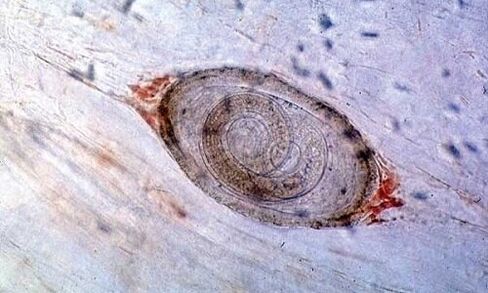
Trichinella is a parasitic worm that infects the human body, causing the dangerous helminthic disease trichinosis.
They start to develop in the striated muscle area of the body, then they are redirected to the small intestine. In advanced cases of infection, there may be about 15, 000 trichina eggs per kilogram of muscle tissue. These parasites are capable of causing a deadly disease, which was named after its source - trichinosis.
Whipworms are so named because of their appearance. The anterior part of his small body is similar to a thread, with an esophagus located in it.
The posterior part is wider, the rest of the parasite's internal organs are located in it. The whipworm can be up to 50 mm long. It feeds on blood and tissue fluids. Trichocephalosis causes the disease.
Tapeworms
There are about 3, 500 species of tapeworms known worldwide, also called cestodes. These flatworms have no digestive system, and the diseases they cause are called cestodoses.
The most common cestodoses:
Cysticercosis
The disease is caused by the larvae of the pig's tapeworm, which enter through contaminated food, with dirty hands.

The disease affects the skin, bones, internal organs, brain and spinal cord. Most of the time, the parasites are sent to the brain (in 60% of cases of infection). It is diagnosed based on the appearance of rounded formations on the skin. The disease is treated, in case of infection of the central nervous system the prognosis may be unfavorable.
Echinococcosis
It is located in the liver, lungs and many other internal organs. Echinococcus larvae stimulate the disease. They can develop within a person over the course of several years.
Infection occurs through contact with animals, picking berries and fruits, drinking contaminated water.
The course of the disease is not very noticeable, it can develop over the years and ends up being detected only by chance.
Alveococcosis
Alveococcosis is caused by larvae of alveococcal worms. The disease is similar to echinococcosis, but it is more serious. It affects the lungs and kidneys. Without treatment, it is highly likely that the disease will be fatal due to the development of liver failure.
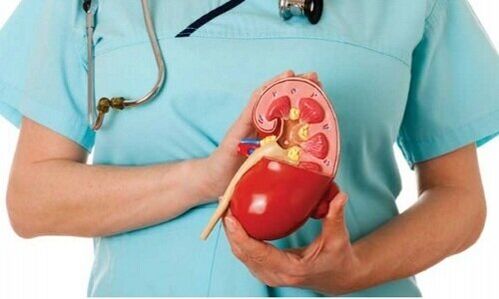
Alveococcosis most often affects the kidneys.
Teniarinhoz
Teniarinhoz is caused by a bovine tapeworm. It parasites the tapeworm in the area of the human small intestine, develops over a period of 2, 5-4 months. The prognosis for treatment is usually favorable. The parasites can enter a person with infected raw meat or with insufficiently thermally processed meat.
Tapeworms are highly prolific. They have the lowest remaining sensitivity and no digestive system. These parasites cannot develop without a host.
Earthworms
Flounders are chance. These are flattened worms, with the shape of the body similar to the oblong leaf of a tree.
Some species of trematodes can be up to five feet in size.
And they end up in the human body most of the time through fish or other seafood. About 7, 200 species of worms are known, 40 of which inhabit humans and cause trematodes, a serious disease caused by infection.
The most common worms:
Liver worm
Globally distributed, it can exist in animals and humans. The biological life cycle is complex, the parasite changes host.
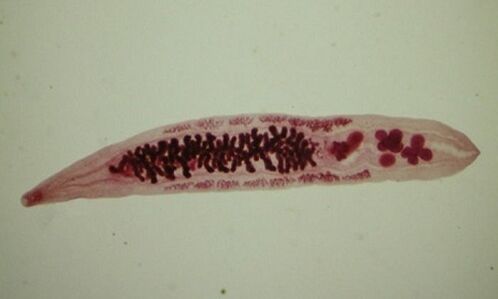
The most common worm is the liver worm.
Schistosoma
Schistosome larvae can penetrate the skin or mucous membranes. The life cycle is complex, they feed on blood. A female is capable of producing about 3, 000 eggs a day, the fertility of these parasitic worms is very high.
Other liver worms
They cause opistorchiasis, a helminthic disease that spreads mainly in the liver. They have a toxic effect on the human body.
The digestive system of lucky worms is well developed and, with it, the reproductive and excretory system.
The rest of the systems are developing poorly. Trematodes feed on blood, skin epithelial cells and intestinal contents. They can live almost anywhere: from the liver to the conjunctival sacs of the eyes.
Other types of endoparasites
The rest of the internal parasites are a variety of bacteria that cause dangerous diseases and, with them, the simplest microorganisms. The fungus that spreads inside the human body also belongs to the section of endoparasites.
Many beneficial and harmful microorganisms live in the human body. Some of them cause quite dangerous illnesses that can lead to death. It is not always possible to immediately recognize the presence of parasitic creatures within yourself, but an early diagnosis of the infection offers a better chance of a complete cure. If invasion is suspected, it is recommended to have a thorough examination by a doctor immediately.



































